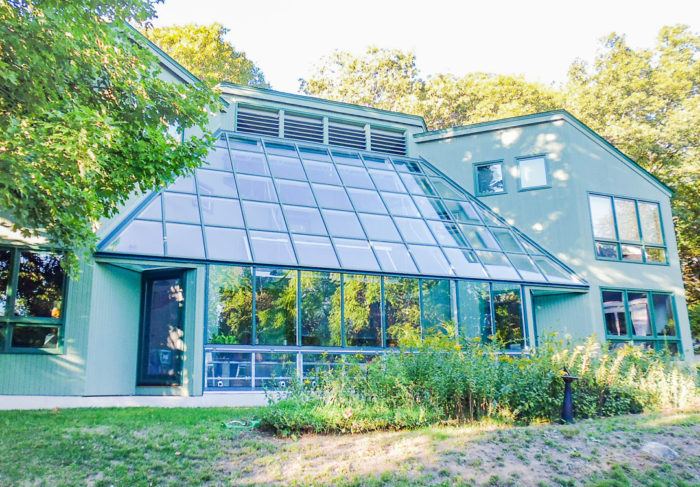
Image Credit: Marc Rosenbaum
The late 1970s were a vibrant time in solar-driven, energy-efficient housing, full of passion and innovation. The Northeast Sustainable Energy Association (NESEA) was founded in 1974, and members were in the thick of this experimentation.
Multiple approaches had their own devoted adherents. One approach was active solar heating, with a firm engineering basis emerging from the University of Wisconsin Solar Energy Lab. Another approach was sun-tempered, superinsulated housing, pioneered by Wayne Schick at the University of Illinois, Harold Orr of the Saskatchewan Research Council, and Gene Leger in northern Massachusetts. There also was passive solar heating, championed by Ed Mazria (of The Passive Solar Energy Book) and the group at Los Alamos Scientific Labs (led by Doug Balcomb) that resulted in the three-volume Passive Solar Design Handbook.
This handbook included substantial contributions from Total Environmental Action in New Hampshire, including Peter Temple, Dan Lewis, Joe Kohler, Charles Michal, and Bruce Anderson. Finally, there was the double-envelope house approach, which was advocated by architect Lee Porter Butler, with similar work occurring in Norway.
Double-envelope design
A double-envelope house typically had a large greenhouse or sunspace covering the south façade, connected to a natural convection air loop formed by the roof and the north wall, and a crawl space below the house, often with bare earth.
The air loop path in the frame portions of the house was between an interior insulated assembly and an outer insulated assembly. The concept was that during a sunny day, the heated air from the glazed space would circulate upward and into the roof loop, down the north wall loop, and into the crawl space before returning to the bottom of the solar space. The claim was that the bulk of the solar energy was stored in the earth below the crawl space, and that energy was re-supplied at night, keeping the solar space from freezing and also buffering the heat loss through the roof and north wall. The standard envelope house was a two-story box with an all-glass south façade – these houses wouldn’t be rated highly on their architecture.
The NESEA community played a significant role in double-envelope development, with members hosting three gatherings in 1979 and 1980 to share experience. Two small books emerged in 1980 — Don Booth’s The Double Shell Solar House, and William Shurcliff’s Superinsulated Houses and Double Envelope Houses.
Doug Clayton wrote the performance monitoring chapter (there’s a great photo of him with Norman Saunders and Bob Smith poring over reams of paper!). Brookhaven National Lab also did some detailed monitoring of a double-envelope house and found little evidence that this reverse nighttime cycle was operating as described or that much solar energy was actually being stored in the earth beneath the house.
The Minergy House: A hybrid
As a young engineer I conducted research on solar and wind renewable energy during college and graduate school. I was learning everything I could about these technologies. I was skeptical of Butler’s claims about how double-envelope houses worked.
I heard about the Minergy House being built in Lexington, Mass. (“Minergy” stood for MINimum enERGY). The 2,240-square-foot house, built in 1980, was a thoughtful hybrid. It featured a double-envelope design that also incorporated some direct-gain passive solar features with added thermal mass. Designed by architect Bill Mead for Doug Holmes and his family, it was emphatically not a simple box. Pueblo Bonito and Wright’s Solar Hemicycle House are cited as design precedents for this south-facing, chevron-shaped house. Doug, a chemical engineer, had significant design input on the performance side. I went to visit Doug, then in his 80s, and catch up on how the house has performed over the last 35 years.
The solar engine of the house is a greenhouse built by Mark Ward. It is a salvaged steel and cypress structure, glazed with double-insulated glass. It is cradled by symmetrical wings that reach out to the southeast and southwest. The center portion is double envelope, and the wings and the second floor are direct-gain passive solar. Doors on both levels of the house can be opened to admit solar heated air directly from the greenhouse.
Thermal mass is everywhere: in the dyed concrete floor slabs in the wings and second level; in the exposed concrete half walls in the first-level wings; in a salvaged timber frame floor structure with wood decking supporting the second floor; and in the multiple layers of drywall. Much of this mass doesn’t receive direct solar gain, but the area exposed to the solar heated air is large, and as it absorbs and releases heat, it stabilizes temperatures significantly.
A modest thermal envelope
The thermal envelope is modest by today’s standards. The walls and roof in the portions without the double envelope are 2×6 with batts and 2×10 with batts, each with 3/4 inch of interior rigid foil-faced foam. The loop walls add a 2×4 wall with batts as an inner wall. The roof loop is built of an upper roof of 2x8s with batts and an inner roof of 2x6s with batts. Windows to the exterior are triple-glazed. There are a few windows into the loop, with a hinged glazed panel on the inside so the exterior window can be opened. The floor over the crawl space is insulated with R-11 batts, and the crawl space is bare earth. There are 2 inches of rigid foam on the exterior of the concrete foundation walls.
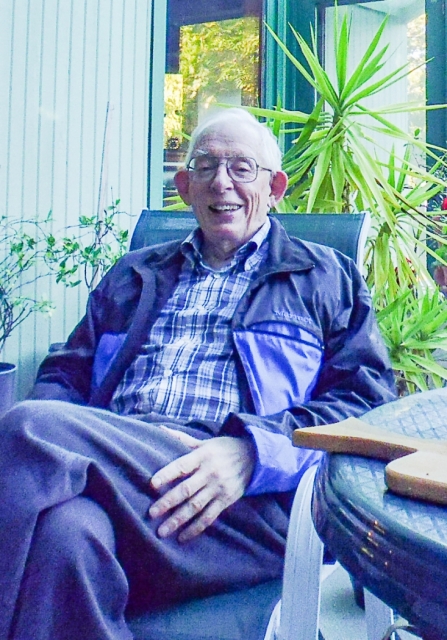
There is a solar thermal collector for domestic hot water suspended in the greenhouse which protects it from freezing. There is no fresh air ventilation system. Two small wood stoves provide back-up heat.
There used to be a saying, “Passive solar, active people” — and the Minergy House exemplifies this. At the end of the day, if the house hasn’t been warmed by the sun, the family will light a small fire, which will burn out overnight. In the morning, if the forecast predicted overcast skies, they might light a fire to take the chill off. Temperatures in the house range from the upper 50s to the 80s F, which is common in these early solar homes. The thermal storage dampened the temperature excursions, and also guaranteed that this house would never freeze if left unattended.
Lessons learned
What did we learn from the Minergy House and other houses like it? After 35 years, everything works! Nothing is automated or digitally controlled, so there have been no equipment failures. We’ve learned that using earth buffering to keep highly glazed buffer spaces from getting too cold is a good strategy. Sadly, in some cases, we’ve learned the hard way that exposing wood-framed buildings to bare earth can cause mold and decay. (I helped fix a decaying, moldy double-envelope house a few years ago.)
I think we’ve learned that we don’t need the double envelope; in fact, it was proposed that a retrofit for these houses could involve blowing the loop full of insulation. I think the most successful of the double- envelope houses were early superinsulated houses with the glazed buffer space not only providing some solar heating, but also reducing nighttime heat loss through the large south-facing glazed areas of the living space. That need has decreased with the highly-insulating glazing available to us today.
We’ve learned that we want very airtight envelopes, and that we need fresh air ventilation. Internal gains still help us heat our houses, but the source of these gains has shifted from incandescent lighting and inefficient refrigeration to the gaggle of electronic devices that fill our homes. And finally, I think we’ve learned that our knowledge is only extended by pioneers, like Doug and his family, who were willing to take risks.
Marc Rosenbaum is director of engineering at South Mountain Company and a lifetime member of NESEA. This article was originally published in the Spring 2017 edition of BuildingEnergy, the magazine of the Northeast Sustainable Energy Association. Doug Holmes passed away on Dec. 23, 2016.
Weekly Newsletter
Get building science and energy efficiency advice, plus special offers, in your inbox.






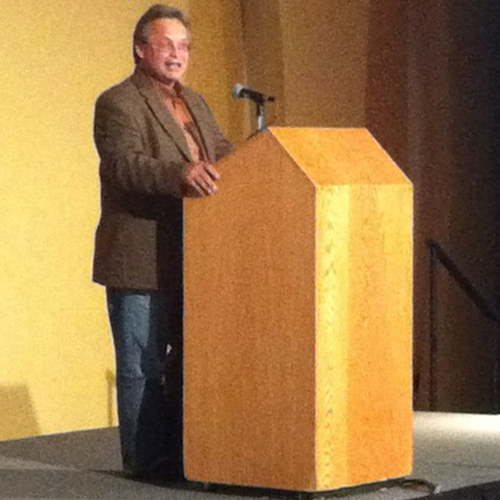
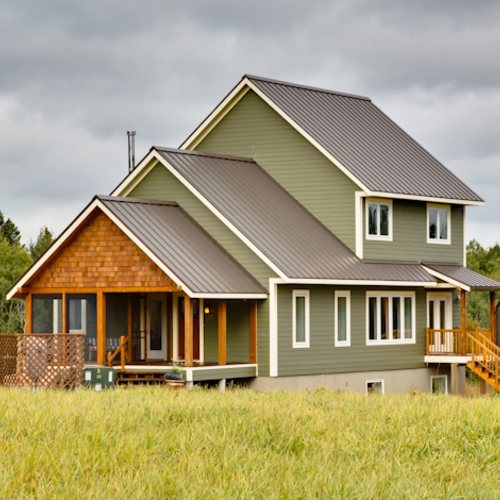
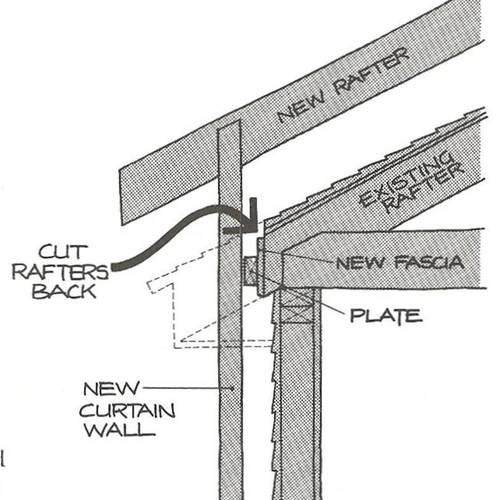






4 Comments
Marc
Thanks for this. Another fascinating account of what must have been a very interesting bunch of people to be around. We are sure in their debt.
A nice summary of lessons learned
Marc,
Thanks for this report; we all need to remember and record our history. It's good to have so many details on double-envelope houses assembled in one place.
I especially appreciate these observations:
"Brookhaven National Lab also did some detailed monitoring of a double-envelope house and found little evidence that this reverse nighttime cycle was operating as described or that much solar energy was actually being stored in the earth beneath the house."
"There used to be a saying, 'Passive solar, active people' — and the Minergy House exemplifies this."
"Temperatures in the house range from the upper 50s to the 80s F, which is common in these early solar homes."
"Sadly, in some cases, we’ve learned the hard way that exposing wood-framed buildings to bare earth can cause mold and decay."
"I think we’ve learned that we don't need the double envelope; in fact, it was proposed that a retrofit for these houses could involve blowing the loop full of insulation."
On the positive side, "Nothing is automated or digitally controlled, so there have been no equipment failures" -- an important point.
Again -- thanks, Marc.
-- Martin Holladay
I got to see 1st-hand the problems with the double envelope, passive "Solar Home". The original owner of one built down the road from us in the early 1980s was put on the market. Here is what I saw:
The original architects drawings! These drawings had a 1' spacing between the outer and inner walls, sun rays coming in from the solarium that faced South, the bermed Earth on the North facing walls, and the crawlspace full of heat mass concrete blocks. It was great to see on paper. We even reached out to the architect and talked on the phone! He had retired but was willing to go out and see what needed to be done on the house.
The floor joints on the 1st floor had deteriorated -- the ones exposed to the concrete block heat mass in the crawlspace -- so those floors had at least 2 locations with a noticeable 1" drop, which made us worry about unseen damage.
The North side walls that were set into the Earth berm were noticeably cooler than the middle of the house but had clear water damage, including stains and cracks, from basically acting as basement walls on the 1st floor.
The South facing solarium was a gorgeous wall of glass and felt much warmer than the rest of the house -- I would guess 20F warmer than ambient temp -- but we saw stain marks on the wood framing leading to the 1' double wall envelope where vap0r probably condensates from the convection loop.
I crawled into the crawlspace and verified the heat mass blocks that were in the architecture drawings. These were about 4' x 4' x 4' cubes of stacked concrete block spaced throughout the crawlspace, with just enough space between them to crawl around. It was very unique to see the heat masses like short towers in the crawlspace, and the crawlspace floor was very clean with no obvious sign of water damage.
We left scared of all the work the house would need. The house did indeed not have an air conditioner, and only a wood stove in the living room for heat, but we wondered what was hidden in those double walls. Someone did end up buying this unique gem, even with its problems, but I hope they contacted the original architect or someone who can renovate it correctly.
I went to look at a car in southern New Hampshire, oh, 25 or more years ago, and its owner had a similar style house. I recall the tall atrium with concrete and stone, but little else, I was there to look at a car after all. Owner claimed he had to vent most of the winter.
Log in or create an account to post a comment.
Sign up Log in